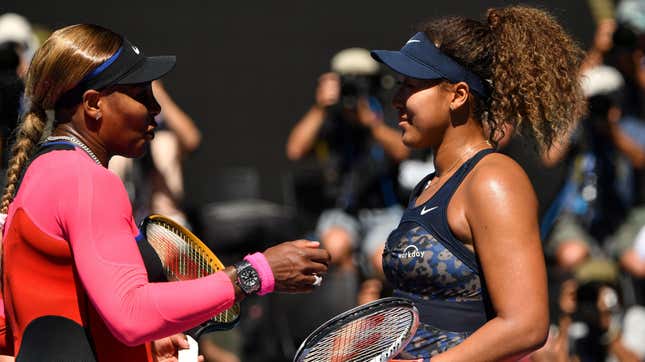We're Allowed to Have More Than One Great Black Tennis Player at a Time
Latest

On Wednesday night, while mere mortals prepared to go to bed and rest from their days of ordinary tasks, Naomi Osaka and Serena Williams faced off in the first semi-final of the Australian Open. The match, between the current Greatest of All Time and a rising superstar, was some of the most interesting and nail-biting tennis of the entire Open: two opponents who are not only evenly paired, but push each other in ways no other player can challenge. Osaka won the match, which might have prompted coverage of the electric game—Osaka breaking Williams’s serve, the intensity of the game, Williams’s incredible rally to try and rip victory from her opponent’s clutches. Really, it could’ve been anything other than another round of Will She or Won’t She Retire.
After Osaka’s win, Williams performed her usual twirl and wave to the crowd, this time adding a small moment where she looked out to her fans, hand over heart, and acknowledged their presence. That move took up all of the air in post-match coverage, as commentator and former tennis star Steffie Graff wondered whether Williams, with the gesture, had just said goodbye to the sport of tennis forever. The Washington Post pointed out Williams “is transitioning mentally, and on the other side of aging, 23-year-old Osaka is gaining strength and realizing that this is her time.”
-

-

-

-

-

-

-

-

-

-

-

-

-

-

-

-

-

-

-

-

-

-

-

-

-

-

-

-

-

-

-

-

-

-

-

-

-

-

-

-








































